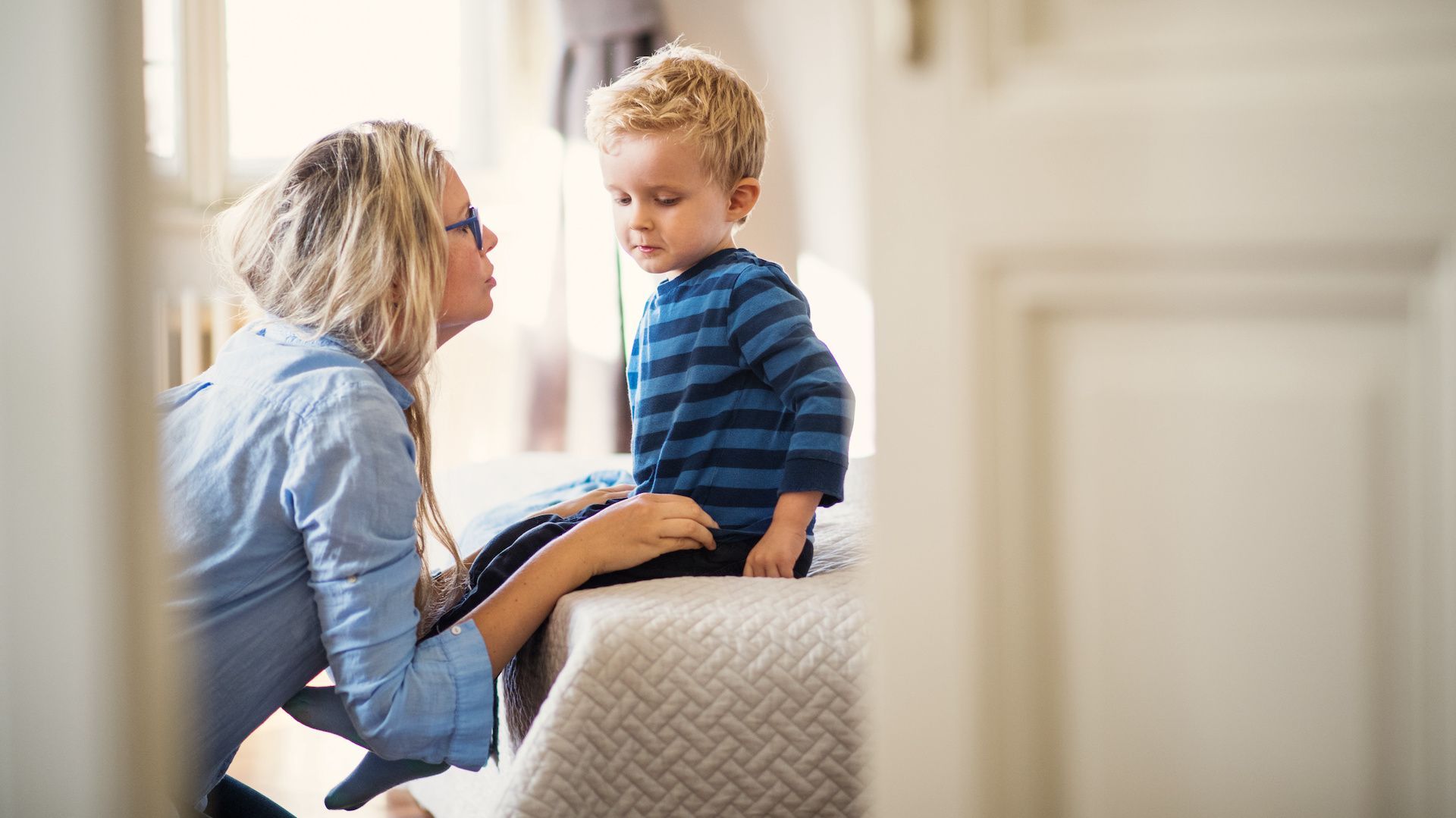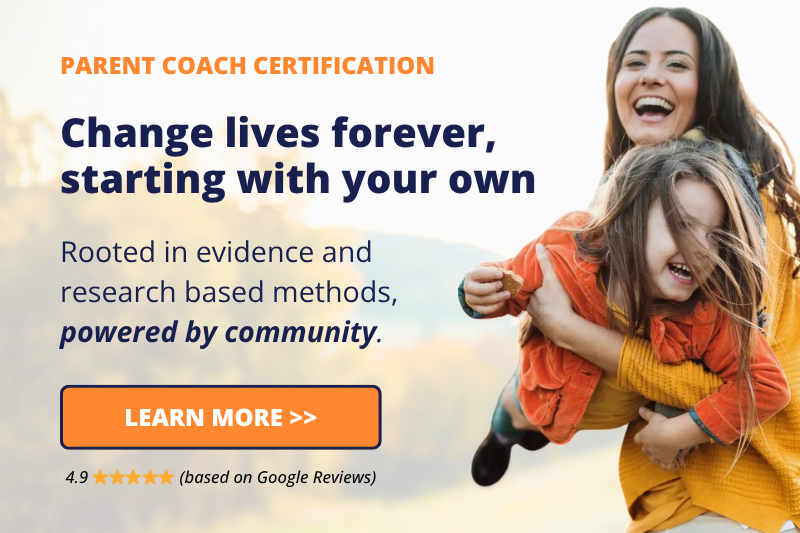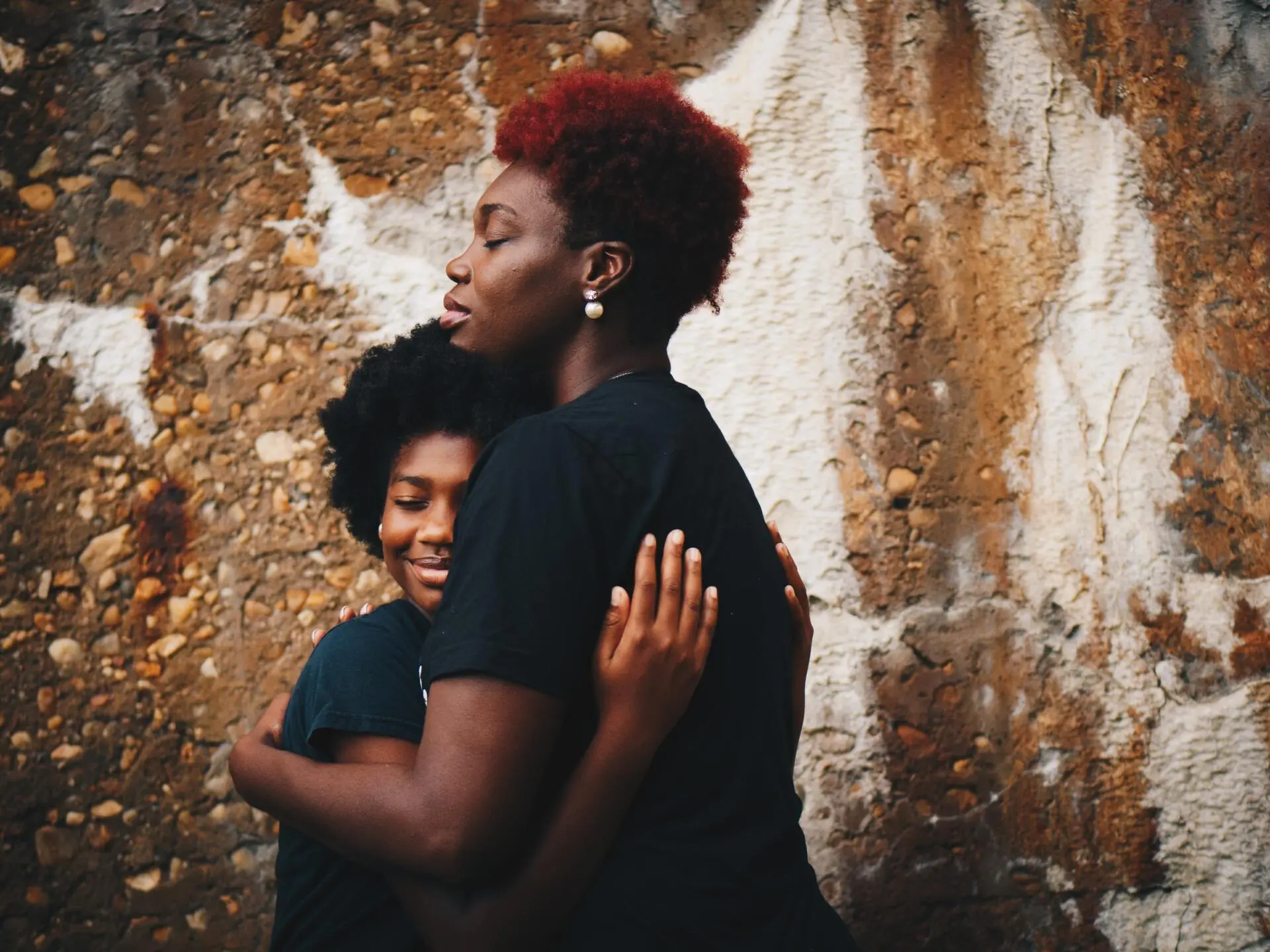Age-Appropriate Consequences for Lying in Toddlers and Preschoolers

Age-Appropriate Consequences for Lying in Toddlers and Preschoolers
As parents, hearing a young child tell a lie can feel jarring. Whether it’s a toddler insisting they didn’t spill the juice (while standing in a puddle of it) or a preschooler blaming a sibling for a missing toy, our immediate impulse might be to correct, discipline, or express disappointment.
But what if lying isn’t a sign of defiance or deceit, but a developmental milestone?
At the Jai Institute for Parenting, we encourage parents to respond to lying not with punishment, but with empathy, understanding, and gentle guidance.
In this blog, you’ll learn how to navigate dishonesty in toddlers and preschoolers in a way that strengthens emotional intelligence, builds trust, and lays the foundation for a lifelong commitment to telling the truth.
Why Do Toddlers Lie?
To understand how to respond to children lying, we first need to understand why it happens. Young children aren’t lying because they’re immoral or defiant. They’re lying because they are human, and their brains are still developing.
The prefrontal cortex, the part of the brain responsible for impulse control, reasoning, and long-term planning, doesn’t fully mature until around age 25.
Toddlers and preschoolers are primarily operating from their “feeling brain”—the limbic system. When they lie, it’s not a calculated moral failure. It’s a reactive, immature attempt to solve a problem or avoid discomfort.
Some common reasons toddlers lie include:
- Avoiding punishment or disapproval:
“I didn’t take it!” means
“Please don’t be mad at me.”
- Protecting connection: “I don’t know who did it,” often translates to
“I’m scared you won’t love me if I tell the truth.”
- Experimenting with imagination:
“The fairy moved my shoes!” reflects their vibrant inner world.
- Seeking autonomy or empowerment:
“Daddy said I could” might come from a desire to feel independent.
- Copying adult behavior: If a child hears white lies often (“Tell them I’m not home”), they may mirror this.
Understanding these motivations allows us to meet the behavior with empathy, rather than fear or shame.
Understanding Imaginative vs. Intentional Lies
Imaginative lies are a normal, developmentally appropriate way for children to explore their world.
A preschooler saying “I didn’t eat the cookie” with crumbs all over their face isn’t trying to deceive you; they’re trying to avoid the shame or fear they associate with being “in trouble.”
Imaginative storytelling helps toddlers and preschoolers practice cause-and-effect thinking, social dynamics, and emotion regulation. It’s how they experiment with power and play. When we react with harshness, we risk crushing this natural and healthy process.
Instead, try saying:
“That’s a big story. I wonder what part is pretend and what part really happened.”
This invites honesty gently, without activating a fear response.
Common Developmental Reasons for Lying
Lying is not a sign of moral failure in toddlers; it’s a sign that the brain is developing new capabilities. Some reasons toddlers lie include:
- Avoiding consequences: They’re scared of what might happen if they tell the truth.
- Imitating adults: They hear white lies or exaggerations from caregivers.
- Testing limits: Lying becomes a way to experiment with autonomy and control.
- Wishful thinking: They want something to be true, so they say it is.
- Memory gaps: They may genuinely not recall events clearly.
The more your child trusts that they can bring the truth to you, without fear of punishment, the more they will.
Gentle Ways to Address Lying in Toddlers
Responding with gentleness does not mean letting behavior slide. It means understanding the behavior in context and using it as a teaching moment.
Encouraging Honesty with Positive Reinforcement
Every child needs to know that truth is not only expected, it’s safe.
The more warmly and consistently we respond to honesty, the more likely children are to choose it. When a child tells the truth, even if the truth is messy, affirm their courage:
“I really appreciate you telling me the truth, even though it was hard. That was very honest of you.”
Positive reinforcement doesn’t mean rewards or bribery. It means affirming the inner qualities you want to grow: courage, honesty, and integrity. These values take root when children feel emotionally safe, not when they fear punishment.
Some tools for encouraging honesty:
- Create space for confession:
“Is there anything you want to tell me? I’m always here to listen.”
- Praise effort:
“You told the truth even though you were scared. That shows a strong heart.”
- Keep your tone calm: Your nervous system teaches theirs what’s safe.
Modeling Honest Behavior
Children absorb our values by watching how we move through the world. They learn far more from what we do than what we say. If we want our children to tell the truth, we must model truth-telling in our daily lives.
Here are a few ways to embody honesty:
- Own your mistakes:
“Oops, I forgot your snack. I’m sorry!”
- Be transparent:
“I don’t know the answer, but I’ll find out.”
- Avoid performative apologies or exaggerations that undermine trust
You might even narrate your honesty: “It’s tempting to say I didn’t get the email, but I did. I’ll just tell the truth.”
This shows children that truth is not only important, it’s possible, even when it’s hard.
Focus on Teaching Honesty Instead of Punishment
Why Punishment May Backfire
When lying is met with punishment, children learn one thing: telling the truth is unsafe.
This can create a cycle:
The child tells a lie to avoid punishment.
The adult punishes the child for lying.
The child becomes more skillful at lying next time.
This cycle doesn’t foster honesty; it fosters fear. And, fear disconnects children from their own inner compass.
Instead of punishment, we can have gentle, natural, and logical consequences in our toolboxes that allow the child to remain connected to both the adult and their own sense of worth.
How Gentle Consequences Encourage Learning
Gentle consequences are never about making a child “pay.” They’re about supporting a child to reflect, repair, and grow.
Here are examples of gentle consequences:
- A child lies about brushing their teeth → A parent joins them in the bathroom and brushes together for the next few nights.
- A child blames the sibling for a spill → Parent encourages collaborative cleanup, focusing on teamwork over blame.
- A child denies taking a toy from a friend → Parent models how to return it, and explores feelings:
“Was it hard to give it back? That makes sense.”
These consequences are rooted in the Jai’s PEACE Process:
- Presence: Stay grounded and emotionally available.
- Empathy:
Understand the emotion driving the lie.
- Acknowledge:
Name what is true, without shaming.
- Conscious Communication: Use language that invites collaboration.
- Explore Solutions: Reflect together and plan for next time.
Building Trust Through Positive Communication
The Role of Empathy in Toddler Behavior
Toddlers are still learning how to regulate emotions and express their needs. When they lie, it’s often because they’re overwhelmed by their emotions. These can often be fear, embarrassment, or desire.
Empathy helps your child feel seen, soothed, and safe. When a child feels emotionally safe, their nervous system shifts out of reactivity and into receptivity. This is where learning happens.
Empathetic responses might sound like:
“You were worried I’d be mad, huh? That’s okay. You can always tell me the truth, even if it’s hard.”
Instead of focusing on the lie, you focus on the feeling behind it, and meet your child there.
Tips for Open Conversations About Honesty
Every child is different. Every parent is different. There is no one-size-fits-all script for teaching honesty. What matters most is creating an environment where truth feels safe and connection is preserved, even when mistakes are made.
Here are some conversation options to help you foster openness and trust when your toddler or preschooler isn’t being truthful. Use them as inspiration, not instruction. Try what resonates, adapt what doesn’t, and trust your relationship to guide you.
If you want to spark curiosity:
- “What happened in your body when you thought about telling me the truth?”
- “Was it hard to tell me what happened? That makes sense.”
- “Do you remember what you were feeling inside when you said that?”
If you want to offer reflective support:
- “Telling the truth can feel really big and scary sometimes. I’ve felt that way too.”
- “I care more about your heart than the mistake. Can you help me understand what happened?”
If you want to reframe the moment:
- “Mistakes are how we learn. I make them too. We’re still growing.”
- “You told me something that wasn’t true, and I love you so much. Let’s talk about what you were needing.”
If you want to empower your child:
- “Everyone gets another chance to try again. Would you like to give it a go?”
- “You’re learning. I believe in your ability to be honest, even when it’s hard.”
If you're unsure what to say:
- Sometimes, just pausing, softening your body, and holding space without words can be the most powerful response. Your presence communicates,
“You’re safe here.”
And here are phrases you might choose to avoid, not because they’re “wrong,” but because they often close the door to connection and put a child’s nervous system into defense mode:
- “Are you SURE you didn’t…?”
- “I know you’re lying!”
- “You better tell me the truth right now!”
Instead of trying to catch your child in a lie, try to
create a culture where truth is something we return to together, with curiosity, warmth, and mutual respect. You don’t need to be perfect. You just need to be present.
Practical Strategies to Use When Your Toddler Lies
When a toddler lies, they’re not being malicious. They’re protecting themselves. They’re overwhelmed. Or they’re simply experimenting with language and imagination.
Below are gentle, developmentally attuned options you can consider when responding to dishonesty.
Option 1: Use Sensory Calming Tools First
Before diving into a conversation, check in with the energy in the room. Is your child’s body tense? Are they holding their breath, hiding, or avoiding eye contact?
A dysregulated child can’t learn. Before you talk about the lie, try helping them feel physically safe.
You might:
- Offer a long hug or hand squeeze
- Sit side by side and do “butterfly taps” on the knees
- Take a walk or swing outside together
- Use deep breathing games like “smell the flower, blow out the candle,” or “lion’s breath”
- Whisper something silly and lighthearted to break the tension
- Rock in a chair or lie down and stare at the ceiling clouds
These tools support nervous system regulation and can serve as a doorway to connection for you and your child.
Option 2: Emotion Coach the Moment
Once your child feels calm enough to engage, you might explore what was underneath the lie, not to accuse or correct, but to connect.
You could say:
- “You said you didn’t do it… I wonder if you were feeling worried about how I’d react?”
- “It looked like maybe you were afraid to tell me. That makes so much sense.”
- “Sometimes I say things that aren’t quite true when I’m scared, too. What were you hoping for?”
When we help toddlers name their feelings and needs, we’re building the foundation for honesty, not through fear, but through emotional fluency.
You don’t need to get it “right.” Even your guesses at their inner world help them begin to make sense of their feelings.
Option 3: Offer a Do-Over
Children are still learning how to match their words to their feelings. Sometimes they simply need another try.
You might offer:
- “Let’s start fresh. Would you like to tell me what really happened this time?”
- “Sometimes our mouths say something different than what’s in our hearts. Want to try again?”
- “Would you like a redo? I’ll be right here.”
Do-overs are not about letting children “off the hook.” They’re about reinforcing the idea that honesty is a choice we can always return to, and that love doesn’t disappear when we mess up.
Option 4: Use Play to Explore the Concept of Truth
Especially with toddlers and preschoolers, stories, toys, and role-play can help them explore honesty in a way that feels safe and fun.
Try:
- Reading books about characters who struggle with truth-telling
- Creating a puppet show where one puppet lies and the others help it work through its feelings
- Drawing pictures of feelings like “afraid,” “embarrassed,” or “hopeful”
- Acting out silly scenarios where YOU tell a pretend fib and they help “solve the mystery”
Play invites self-reflection without pressure. It opens a channel for learning that sticks.
Final Thoughts: Empathy Is the Most Effective Consequence
When toddlers and preschoolers lie, it’s not a sign that they’re manipulative or deceptive. It’s a sign that they’re learning about their emotions, relationships, and how to stay safe in moments that feel big or overwhelming.
Honesty isn’t something we teach by demanding it or punishing the lack of it. It’s something we build by showing up with consistency, curiosity, and emotional safety. When children feel safe with us, they’re far more likely to tell the truth, even when it’s hard.
Instead of focusing on whether your child was “right” or “wrong,” focus on what they were trying to express or protect. That’s where the real learning happens.
As with everything else in parenting, you don’t have to handle it perfectly. What matters most is that your child knows you’re a safe place to come back to, even after a mistake. When they feel that, they’re far more likely to take the risk of telling the truth next time.
That’s how we build honesty. That’s how we build trust. One connected moment at a time.
Start your journey today and discover how to support your child through the power of brain science, child development, and emotional intelligence.
Join Jai’s 7-Month Parent Coaching Program and become part of a global community of over 2,500 coaches making a difference for families around the world.
Meet Your Author, Kiva Schuler
Jai Founder and CEO
Kiva’s passion for parenting stemmed from her own childhood experiences of neglect and trauma. Like many of her generation, she had a front row seat to witnessing what she did not want for her own children. And in many ways, Jai is the fulfillment of a promise that she made to herself when she was 16 years old… that when she had children of her own, she would learn to parent them with compassion, consistency and communication.
Kiva is a serial entrepreneur, and has been the marketer behind many transformational brands. Passionate about bringing authenticity and integrity to marketing and sales, she’s a sought after mentor, speaker and coach.
Share This Article:
Curious for more?














